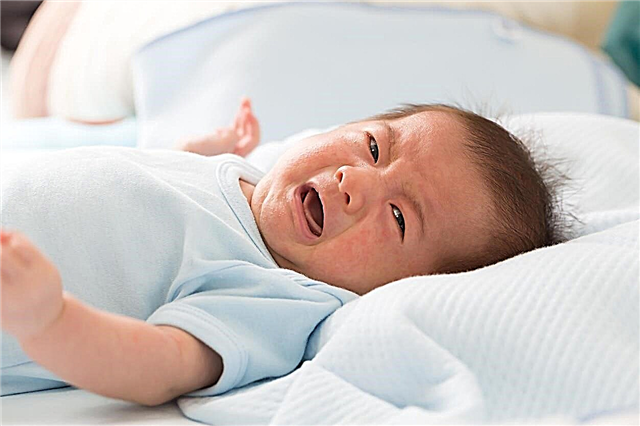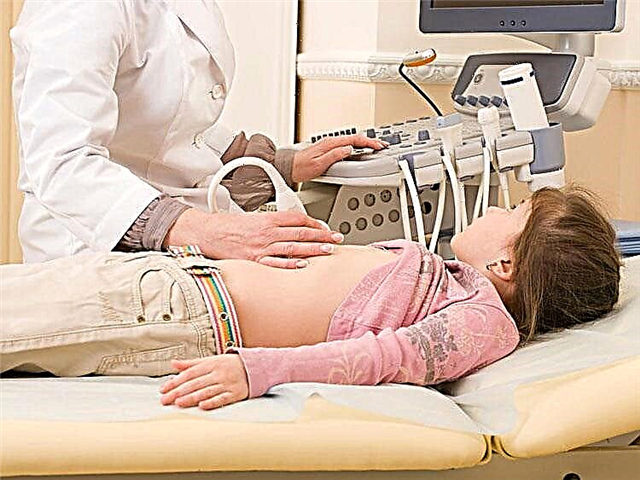
Glucocorticoid hormones in the form of an ointment are in great demand for diseases of the skin and eyes. One of the popular drugs in this group is "Hydrocortisone". Not everyone knows whether such a medicine is used in childhood, when its use is justified and what side effects this drug can provoke in a child.

Release form
Hydrocortisone ointment is of two types.

1% ointment for external use
It is sold in tubes containing 10 g of light yellow or white-yellowish mass.

0.5% eye ointment
One tube of such a medicine contains 3 g or 5 g of a white substance, which may have a grayish, yellowish or greenish tint.
"Hydrocortisone" is also available in ampoules, inside which there is a suspension. It is used for injection into muscle or joint tissue. This form of medication is used for inhalation when coughing, and for adenoids and prolonged rhinitis, the suspension can be included in the composition of complex drops (add "Dioxidin", "Pharmazolin", «Nazivin " and other medications prescribed by the doctor). In suppositories, tablets, nose drops, powder and other forms, such a medication is not produced.

Composition
The main ingredient in the drug is hydrocortisone in the acetate form. In 1 gram of eye ointment, such a substance is contained in a dose of 5 mg, and the amount of this compound per 1 g of ointment for external use is 10 mg. Additionally, the ophthalmic ointment includes anhydrous lanolin, petroleum jelly, and nipagin. The auxiliary components of the preparation for the skin are propyl parahydroxybenzoate, lanolin, water, methyl parahydroxybenzoate, stearic acid and petroleum jelly.

Operating principle
Hydrocortisone has a pronounced anti-inflammatory effect. This substance is referred to as synthetic glucocorticoids. It activates steroid receptors, affects the formation of prostaglandins, stabilizes cell membranes, participates in the metabolism of arachidonic acid, and inhibits the release of compounds responsible for the inflammatory response. Under the influence of "Hydrocortisone" the release of interferons and interleukins, which support inflammation, is inhibited.
The drug also has antipruritic and decongestant effects. With local treatment, the medication reduces the inflammatory process, interfering with the migration of lymphocytes and macrophages into the affected tissues, as a result of which cellular infiltrates are quickly absorbed. If the dosage of the ointment is not exceeded, the drug only accumulates in the epidermis or mucous membrane and almost does not penetrate into the bloodstream, so there are no side systemic effects.

Indications
Ointment for external treatment is prescribed for various allergic and inflammatory skin pathologies:
- With eczema.
- With psoriasis.
- With contact dermatitis.
- With atopic dermatitis.
- With neurodermatitis.
- With insect bites.


Eye ointment is used:
- With allergic lesions - for example, from conjunctivitis or blepharitis.
- With inflammation of the conjunctiva, eyelids or cornea of a non-bacterial nature (if the corneal epithelium is not damaged).
- With chemical or thermal eye burns, when corneal defects are completely epithelialized.

From what age is it allowed to take?
Skin treatment with 1% of the drug is prescribed from the age of two, however, in the annotation to such a drug, it is noted that the use in children under 12 years old should be under the supervision of a specialist. The reason for these precautions is the more rapid depression of the adrenal cortex in childhood than in adults. The drug can interfere with the production of growth hormone.

As for the eye ointment, then in contraindications to such a medication, you can see the age of up to 18 years. However, in practice, the drug can be prescribed to children, but only by a doctor who will correlate the possible risk and the need for such treatment, and also prescribe the required dosage.

Contraindications
Hydrocortisone in the form of an ointment is prohibited for use in case of intolerance to its active substance or other components.
Skin treatment with 1% medicine is not carried out with:
- Ulcerative lesions.
- Open wounds.
- Bacterial infections
- Syphilitic or tuberculous lesions.
- Viral skin infections.
- Fungus on the skin.
- Tumors of the skin.
- Perioral dermatitis.
- Acne vulgaris.
- Rosacea.
The use of 0.5% of the medication in the eye is contraindicated for:
- Purulent eye infections.
- Damage to the organ of vision by viruses, tuberculosis or fungus.
- Glaucoma.
- Vaccinations.
- Trachoma.
- Corneal damage.
The use of 0.5% of the medication in the eye is contraindicated for:
- Purulent eye infections.
- Damage to the organ of vision by viruses, tuberculosis or fungus.
- Glaucoma.
- Vaccinations.
- Trachoma.
- Corneal damage.

Side effects
At the site where 1% of the drug is applied to the skin, itching, swelling or redness may appear. If the ointment is used for too long, atrophic changes may develop in the skin. The risk of secondary bacterial infection and hypercortisolism increases.
When treating with eye ointment, a burning sensation may appear. In addition, such a medication can provoke allergies, a temporary decrease in vision clarity and redness of the sclera. Excessive long-term use increases the likelihood of increased intraocular pressure and damage to the optic nerve. Long-term treatment with such a drug can cause a fungal or bacterial infection (secondary).

Instructions for use and dosage
- Skin treatment with 1% ointment is carried out twice or thrice a day. Only the affected areas are smeared with a thin layer of the drug. The duration of use is determined by the doctor (based on the effectiveness of treatment and the nature of the disease). Usually processing is carried out within 6-14 days.
- An eye ointment in the form of a 1–2 cm long strip is placed over the lower eyelid. Such treatment is prescribed 2-3 times a day for 7-14 days.

Overdose
The use of an increased dose can increase the local reaction to the ointment, but with cancellation, such symptoms quickly disappear.

Interaction with other drugs
The incompatibility of "Hydrocortisone" with other drugs is said only in very long-term treatment, if the hormone enters the bloodstream. In such a situation, it affects the treatment with insulin, anticoagulants, salicylates, antihistamines, silver preparations, diuretics and many other medications noted in the annotation. If a child has an illness for which he is constantly taking medications (for example, for childhood epilepsy), the compatibility of such drugs should be checked with the doctor.

Terms of sale
Both the eye ointment and the topical preparation are over-the-counter (OTC) products. The price of such drugs depends on the manufacturer and the amount of the drug in the tube. Usually 1% ointment costs 25-30 rubles.

Storage conditions and shelf life
Storage of "Hydrocortisone" requires a place inaccessible to small children. The optimal storage temperature for the drug is called the range from +5 to +20 degrees. The shelf life of the ointment for external use is 3 years, and of the eye ointment is 2 years.

Reviews
There are many good reviews about the treatment of children with "Hydrocortisone" in the form of an ointment. In them, mothers note that the remedy is very effective for skin manifestations of allergies and insect bites. Parents say that such a medication acts quickly enough, and the price of the ointment is low (compared to similar drugs). The disadvantages of the drug include its hormonal nature, a high risk of side effects and a rather large list of contraindications.

Analogs
- A substitute for 1% hydrocortisone ointment can be drugs that contain the same active compound:
- Ointment or cream "Locoid"... This medication is allowed from the age of six months, so it is often chosen as a substitute for "Hydrocortisone" for children under one year old. It also comes in lotion and lip cream form.

- Lotion, cream, or ointment "Latikort"... This medication can also be used under the supervision of a doctor for children from 6 months of age.
In addition, instead of "Hydrocortisone", the doctor may prescribe drugs with a similar effect - for example, "Advantan", "Elokom", "Sudokrem", Afloderm, "Beloderm", "Protopic", "Akriderm" or "Elidel"... However, all these drugs differ in their composition, so you should choose an analogue only with a specialist.


Treatment of eyes in children with the use of ointments adds to the problems of parents. To get the most out of your treatment, watch the following video.



